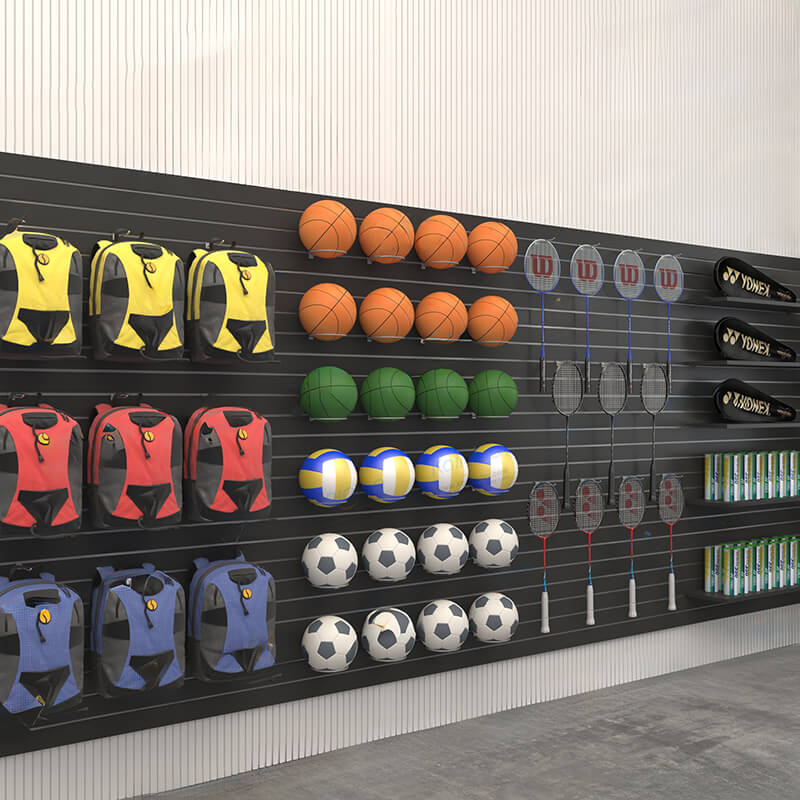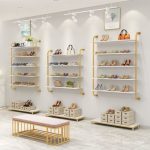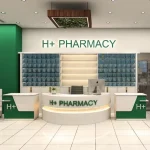
Retail displays are visual merchandising tools that retailers use to showcase their products and entice customers to make a purchase. There are different types of retail display, from simple shelves and racks to elaborate setups that create an immersive shopping experience. The primary purpose of different types of creative grocery store display is to attract attention, highlight product features, and ultimately drive sales.
Effective retail displays types are more than just functional structures; they are carefully crafted to evoke emotions, spark curiosity, and create a sense of desire. From the moment a customer enters the store, they are greeted by a visual narrative that captivates their senses and invites them to explore the products on offer.
There is a wide array of options to choose from, each serving a unique purpose and catering to specific merchandising needs. Retail displays play a crucial role in attracting customers, showcasing products effectively, and enhancing the overall shopping experience. Here are 12 common types of displays in retail that brands can utilize to maximize their merchandising efforts:
Shelving Units
These are the most basic and versatile retail display types available in retail environments. Shelving units consist of shelves arranged in various configurations to hold and showcase products effectively. They can be freestanding, wall-mounted, or integrated into larger display setups. Retailers can customize shelving units to fit their specific needs, allowing for easy access to products while maintaining an organized appearance. By using different heights and depths, brands can create visually appealing arrangements that draw customers’ attention.
Gondola Shelving
Gondola shelving units are tall, freestanding structures with multiple shelves on both sides. Retailers commonly use them in supermarkets and retail stores to create aisles and effectively utilize floor space. Gondola shelving allows for easy product placement and encourages customers to browse through various items. Retailers can adjust the height and spacing of the shelves to accommodate different product sizes, making them a flexible option for displaying a wide range of merchandise.
Slatwall Displays
Slatwall displays feature vertical panels with grooves or slats that allow for the easy installation of shelves, hooks, and other accessories. This design offers flexibility in arranging and rearranging merchandise, making it simple for retailers to adapt their displays to changing inventory or seasonal promotions. Slatwall displays can showcase a variety of products, from clothing to accessories, and can be customized with different colors and finishes to match the store’s branding.
Gridwall Displays
Similar to slatwall displays, gridwall displays consist of a mesh-like panel with evenly spaced holes or openings. This design allows for the attachment of various display components, such as shelves, baskets, and hooks, creating a customizable merchandising solution. Retailers can easily rearrange gridwall displays to highlight different products or promotions, making them a practical choice for dynamic retail environments. The open design of gridwall displays also allows for good visibility of products, encouraging customers to explore.
Endcap Displays
Endcap displays are strategically located at the end of aisles or gondola runs, offering prime real estate for showcasing featured products or promoting special offers. These displays are designed to catch the attention of shoppers as they navigate through the store. Retailers can use endcap displays to highlight seasonal items, new arrivals, or clearance products, effectively driving sales and increasing product visibility. By creating eye-catching arrangements, brands can entice customers to make impulse purchases.
Dump Bins and Bulk Displays
These displays are ideal for showcasing large quantities of a single product or promoting clearance items. Dump bins and bulk displays encourage impulse purchases by making products easily accessible and visually appealing. Retailers can fill these displays with discounted items, seasonal products, or popular snacks, creating an inviting atmosphere that encourages customers to explore. The casual nature of dump bins allows for a relaxed shopping experience, making it easy for customers to grab items on the go.
Countertop Displays
As the name suggests, countertop displays are designed to be placed on checkout counters or other flat surfaces. They are often used to showcase small, impulse-buy items or promotional merchandise. Retailers can use countertop displays to highlight last-minute purchases, such as candy, magazines, or small gadgets. By placing these displays near the checkout area, brands can capture customers’ attention and encourage additional sales before they complete their transactions.
Floor Displays
Floor displays are freestanding units that can be placed anywhere on the retail floor. They come in various sizes and shapes, from simple podiums to elaborate, multi-level setups, and are ideal for showcasing larger or bulkier products. Retailers can use floor displays to create focal points within the store, drawing customers’ eyes to specific items or promotions. By strategically placing these displays in high-traffic areas, brands can increase product visibility and drive sales.
Window Displays
Window displays are the first impression customers have of a retail store. They are designed to catch the eye of passersby and entice them to step inside. Retailers can create captivating window displays that range from simple product arrangements to elaborate, themed installations. By using creative visuals, lighting, and props, brands can tell a story or convey a specific message that resonates with their target audience. An engaging window display can significantly impact foot traffic and overall sales.
Hanging Displays
Hanging displays utilize the vertical space in a retail environment by suspending products or signage from the ceiling. They are often used to showcase clothing, accessories, or other lightweight items. Retailers can create eye-catching hanging displays that draw attention to specific products or promotions. By using creative designs and arrangements, brands can maximize their retail space and create a visually appealing shopping environment.
Themed Displays
Themed displays are designed to create a specific ambiance or tell a story related to a particular product, season, or event. They can be elaborate setups that transport customers to a different world, enhancing the shopping experience and creating lasting memories. Retailers can use themed displays to celebrate holidays, promote seasonal items, or highlight special events. By creating a cohesive and immersive experience, brands can connect with customers on an emotional level, encouraging them to engage with the products.
Digital Displays
In the age of technology, digital displays have become a powerful tool for retailers. These displays can feature dynamic content, product demonstrations, or interactive experiences, captivating customers and enhancing their overall shopping journey. Retailers can use digital displays to showcase promotions, highlight new arrivals, or provide information about products. By incorporating eye-catching visuals and engaging content, brands can create a modern and appealing shopping environment.
Pop-Up Displays
Temporary and versatile, pop-up displays are often used for special events, product launches, or seasonal promotions. These displays can be easily assembled and disassembled, allowing retailers to create a sense of novelty and excitement within their stores. Retailers can use pop-up displays to generate buzz around new products or limited-time offers, encouraging customers to visit the store and explore. The flexibility of pop-up displays allows brands to adapt to changing trends and customer preferences.
Kiosk Displays
Kiosks are self-contained displays that can serve multiple purposes, such as product demonstrations, interactive product information, or even point-of-sale stations. They provide a hands-on experience for customers and can be particularly effective in showcasing technology or electronics products. Retailers can use kiosks to engage customers and provide them with valuable information about products, enhancing their shopping experience. By incorporating interactive elements, brands can create a memorable and informative environment that encourages customer engagement.
In conclusion, understanding the various types of retail displays available can significantly enhance a brand’s merchandising strategy. Each display type serves a unique purpose and can be tailored to meet specific needs, allowing retailers to create an engaging shopping experience that resonates with customers. By carefully selecting and implementing the right displays, brands can effectively showcase their products, drive sales, and foster customer loyalty.
What to consider when choosing display for your own solution
When selecting the appropriate retail displays for your business, there are several factors to consider to ensure an effective and engaging merchandising strategy:
| Factor | Considerations |
| Product Type | – Size and weight of products – Fragility – Aesthetic appeal |
| Store Layout and Space | – Available floor space – Ceiling height – Overall layout |
| Brand Identity and Aesthetic | – Color scheme – Materials used – Overall design alignment with brand |
| Customer Flow and Traffic Patterns | – Navigation through store – Strategic placement for product exposure |
| Flexibility and Adaptability | – Modular designs – Reconfigurable displays – Ease of updates |
| Lighting and Visibility | – Natural light sources – Artificial lighting – Optimal product visibility |
| Accessibility and Interaction | – Customer engagement opportunities – Touch and feel options – Interactive display features |
| Maintenance and Durability | – Resistance to wear and tear – Ease of cleaning and upkeep – Longevity of materials |
| Budget and Cost-Effectiveness | – Initial investment – Long-term benefits – Return on investment |
| Compliance and Safety | – Adherence to safety regulations – Accessibility standards – Stability and weight distribution |
FAQs
How often should I update or rotate my retail displays?
Regular updates and rotations are essential to keep your merchandising fresh and engaging. The frequency may vary depending on your industry, product offerings, and seasonal trends. As a general guideline, it’s recommended to update or rotate your displays every 4-8 weeks to maintain customer interest and align with new product launches or promotions.
Can retail displays be customized to fit my specific needs?
Absolutely! Many display manufacturers and suppliers offer customization options to tailor displays to your unique requirements. This can include custom sizes, colors, materials, branding, and even bespoke designs specific to your products or merchandising concepts.
How do I ensure my retail displays are visually appealing and eye-catching?
Several factors contribute to creating visually appealing and eye-catching retail displays. These include proper lighting, strategic use of colors and contrasts, incorporating creative and unique design elements, and maintaining a cohesive aesthetic throughout the store. Additionally, regularly refreshing and updating displays can help maintain their visual impact.
Are there any eco-friendly or sustainable options for retail displays?
Yes, there are several eco-friendly and sustainable options available for retail displays. These include displays made from recycled materials, such as recycled plastics or repurposed wood, as well as displays designed for easy disassembly and recycling. Some manufacturers also offer displays made from renewable or biodegradable materials, like bamboo or cardboard.
How do I choose the right display for my store’s layout and traffic flow?
Choosing the right display for your store’s layout and traffic flow involves analyzing customer movement patterns and identifying high-traffic areas. Strategically placing displays in these areas can maximize visibility and exposure. Additionally, consider the size and scale of displays in relation to the available space, ensuring they don’t obstruct walkways or create bottlenecks.
Conclusion
In the dynamic world of retail, effective merchandising and captivating displays are essential for attracting customers, showcasing products, and driving sales. By understanding the various types of retail displays and carefully considering factors such as product type, store layout, brand identity, and customer flow, you can create a cohesive and engaging shopping experience that resonates with your target audience.
Remember, retail displays are more than just functional structures; they are storytelling tools that can evoke emotions, spark curiosity, and foster lasting connections with your brand. By embracing creativity, staying attuned to industry trends, and continuously evolving your displays, you can remain competitive and leave a lasting impression on your customers.
If you’re looking to elevate your retail merchandising strategy and create impactful displays that drive sales and customer engagement, consider partnering with our team of experts. We offer a wide range of customizable retail display solutions tailored to your unique needs, from sleek and modern designs to eye-catching, themed installations. Contact us today to schedule a consultation and discover how we can help you transform your retail space into a captivating and immersive shopping experience.
More Posts:
Top 10 Retail Display Manufacturers in USA
What Makes A Good Retail Display?
Top 20 Display Rack Manufacturers 2024





